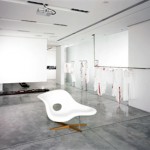Create a Productive Study Area to Improve Your Study Habits and Work More Efficiently

Choose a study space that is constant. You need to be consistent when you are studying. This means going to the same place for all of your study sessions. Using the same study area each day will make you associate that space with studying. When you make this connection you will be more focused on your studies each time you visit that space. It is important that you choose an area that can be used every day. If you’re study area must be shared with others for some reason, work out a schedule so that you know when you can study.
Create a study space that is comfortable. You need to have a place that is well lit, has proper temperature and humidity levels, and has working, ergonomically designed furniture. Ergonomic furniture is furniture that has been designed with its user’s health and comfort in mind. For a child this can sometimes be a problem. Many times children study in areas with work surfaces that are too high. Ideally you want to have your workspace at about waist level when sitting down. When you sit down to write or study, your arms should rest comfortably on the work surface and the elbows should be bent at about ninety degrees or more. Feet should touch the floor and not dangle. Use a footrest or telephone books to accommodate shorter children, as well as stacked pillows or a booster seat to rise up to a more comfortable level for higher work surfaces. When using a computer, the monitor should be level with your head, positioned in front of you about 18 to 30 inches away. Position monitors so glares won’t be a problem.
Create a study space that is healthy. This suggestion ties in with the workspace being comfortable. Improper lighting can damage your eyes. The type of furniture chosen can be stressful for your body. It is important that the study space has the proper layout and makes use of ergonomic furniture. Also, unhealthy humidity levels and air quality can affect study habits. Indoor plants can help to purify the air and stabilize low humidity levels. If humidity levels are too high, think about using a dehumidifier or exhaust fan.
Choose and/or decorate a study space that boosts productivity. Research has shown that there is a positive affect associated with art and productivity. Not only will adding artwork to your study space increase productivity, it can also relieve stress while boosting creativity. The color of your study space will also affect your mood and ultimately how you study. A room painted a sunny yellow color is going to have a different affect on your emotions than one painted in dark blacks or browns. To create the most productive study space, incorporate warm colors. Reds and oranges are supposed to be great for getting you energized and focused. You might also try using complimentary colors that are located on opposite sides of the color wheel. Going this route gives a room a feeling of intensity and high energy as well. If possible, choose colors that inspire you, and avoid grey or white when you can. You don’t have to paint your study space to get energized either. Simply accessorize your study area using creativity-boosting colors that work for you.
Create and choose a study area that isn’t distracting. Choose a secluded, quiet space to study. Invest in a white noise machine or some noise cancelling headphones if you can’t find a place quiet enough to study. Turn televisions off (very few people can resist a distracting TV), ignore the phone and encourage others to respect your workspace and study time. Music is okay, but it is normally best to keep the volume relatively low.
Create a study area that is well organized and clutter free. When you’re studying you need to have your supplies handy. Stock your study space with all the tools you’ll need. This includes pens, pencils, paper, pencil sharpeners, a dictionary, a thesaurus, math tools, erasers, a computer, highlighters, and anything else you might need to study. Your work surface should be large enough to hold everything you need to study, while also leaving enough room for writing. Have a place to store your study materials. Without storage space your work surface will become cluttered. Clutter can be really distracting and a waste of valuable study time. When things are organized you don’t waste any time searching for supplies and can be a more productive student. Make sure that you keep the supplies you use most often easily accessible. You shouldn’t have to get up from your desk for a pencil.
Having a study space is important when you are in school. With these tips you can create a productive study area that will allow you to work more efficiently and improve your grades.



